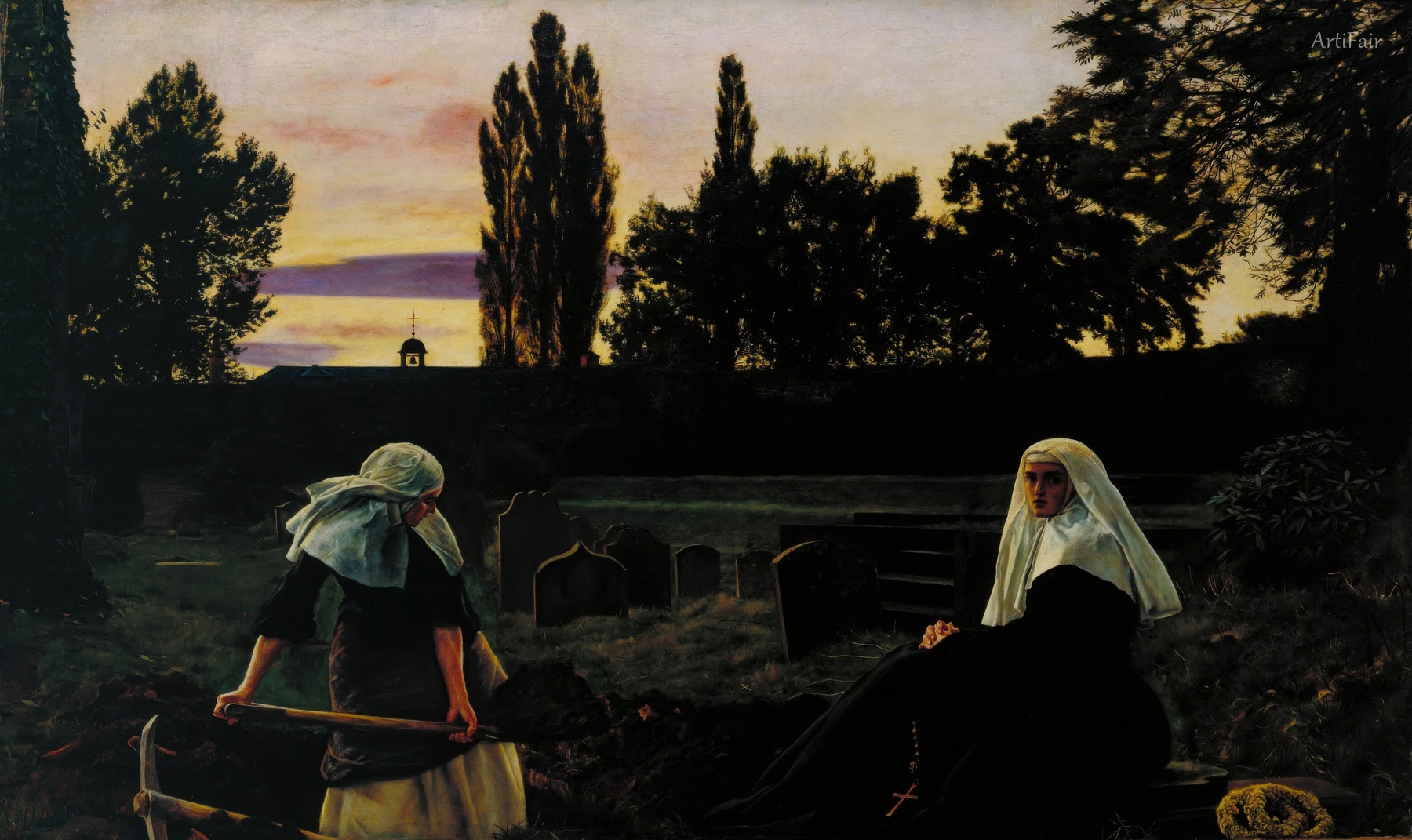
Art Appreciation
In this haunting piece, two figures find their place amidst a twilight cemetery, each swathed in somber hues that echo the atmosphere of mourning and reflection. The foreground presents a woman stooped in labor, garbed in traditional attire, her back turned to the viewer. With a grave and deliberate motion, she wields a spade, perhaps turning the soil in preparation for yet another burial. The subtle light of the setting sun captures the edges of her form, creating a soft contrast to the shadowy surroundings. The contrasting presence of the second figure, elegantly seated and clad in heavy mourning garments, channels an air of contemplation. Her gaze is directed outward, suggesting a stoic acceptance of grief that resonates deeply; it feels as though she is contemplating lost moments, the weight of sorrow hanging in the air like the encroaching shadows around her.
The composition shows a delicate balance; each figure anchors the painting, while the serene yet somber backdrop of a dusky cemetery provides an emotional counterpoint to their presence. The color palette is deeply evocative—muted browns and greys pervade, punctuated only by hints of green and the fading warmth of the sunset, suggesting a transitory moment caught between light and darkness. The use of chiaroscuro amplifies the depth of the emotional narrative unfolding, giving the viewer a palpable sense of melancholy. Millais encapsulated an era’s tradition of mourning while also illustrating a timeless theme: the universal experience of loss. In the quietude of this piece, emotions resonate gently, creating a space for reflection and a sense of connection to those who have come before.